What is perennial verbena and how to grow it?
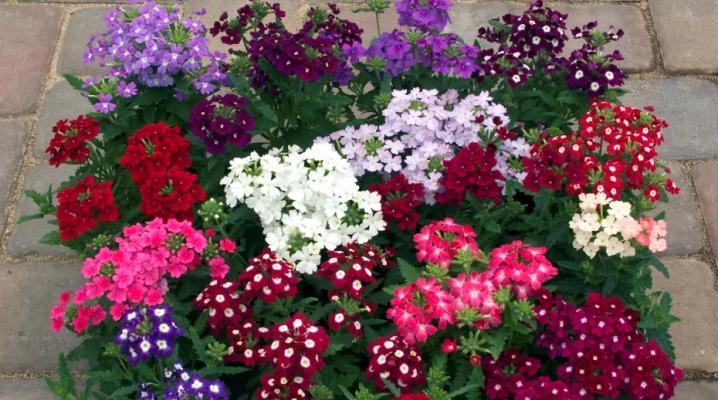
Verbena is a beautiful perennial plant with small multi-colored inflorescences. The flower can be grown both outdoors and on a balcony or windowsill. In any case, it will look very nice.
Description
Verbena is a small shrub or semi-shrub. She has a powerful rhizome and several tall stems. Their height varies from 15 to 150 centimeters. It all depends on the varietal characteristics of the plant.
Verbena leaves usually have a beautiful oval shape. The color of the foliage is both light and dark. Its surface is covered with a small fluff. Verbena usually begins to bloom in the middle of the first summer month. At this time, small inflorescences appear on the top of the stems. They usually dissolve in turn. The color of these colors can be almost any.
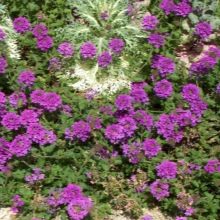
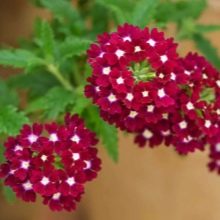
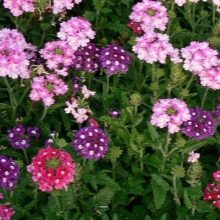
Types and varieties
There are now many varieties of verbena. The most popular are the following types of flowers.
Hybrid
This variety is the most popular among florists. Hybrid, or thinly split, verbena looks spectacular. She has large inflorescences and a beautiful green base. Having decided to plant a hybrid verbena on your site, attention should be paid to the following varieties.
- "Amethyst". This plant grows up to 30 centimeters in height. His flowers are dark red. "Amethyst" retains its attractiveness for a very long time, so it is profitable to plant it on your site.
- Etna. This is another plant with red flowers. It is higher. On average, the plant grows up to 50 centimeters.
- "Imagination". The short verbena variety is perfect for planting in pots or planters. The branchy plant is covered with large purple flowers by summer. It looks very beautiful at this time.
- "Crystal". This is another compact plant that can be grown in a home or apartment. Blooming verbena is decorated with large white buds. They remain on the plant from June to October.
- "Mammut". This verbena variety has a pleasant aroma. The plant grows to a height of 50 centimeters. The inflorescences of such flowers are large. Plants look very nice in large flowerpots.
All of these varieties are available at most gardening stores.

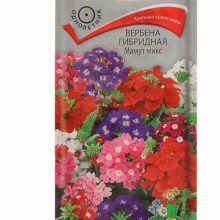
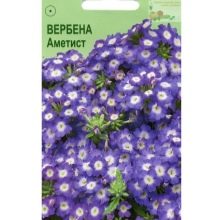
Canadian
A perennial bush plant is highly prized among gardeners. This is not surprising, because this type of verbena is capable of blooming until the very beginning of September. Her flowers can be either pink or white.
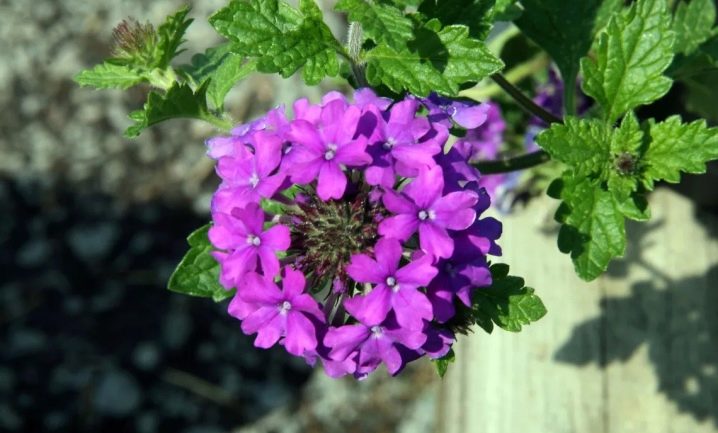
Hard
This plant is also perennial. But it is usually grown as an annual. You can recognize this look by the elongated foliage and small flowers of different shades of lilac. Creeping verbena looks beautiful in flower beds and next to paths.
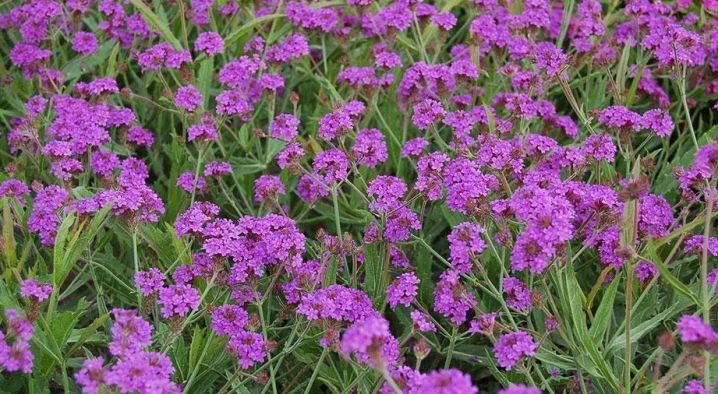
Fragrant
This type of flower is also called lemon. The plant grows to an average of 1-1.5 meters in height. The peculiarity of this type of verbena is that its foliage, when rubbed, smells pleasantly of citrus. It is because of this that it got its name. The flowers of lemon verbena are pale pink. Therefore, it looks very beautiful on the site.
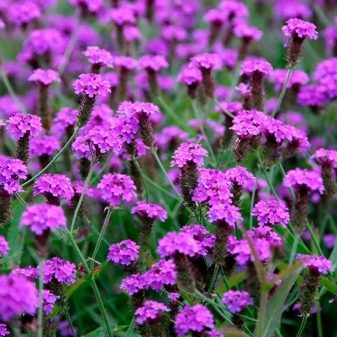
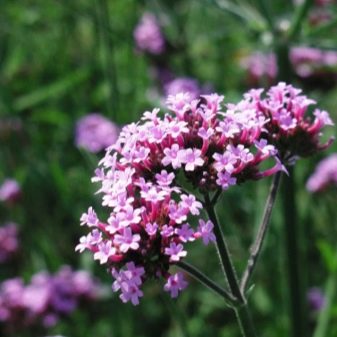
Large-flowered
As the name suggests, this plant has larger flowers than others. Their size can be up to 10 centimeters in diameter. The shade of these colors can be either dark or light.The peculiarity of this garden variety of verbena is that the edges of its flowers are framed with a white border. The most popular are such varieties of large-flowered verbena as "Tuscany" and "Ideal".
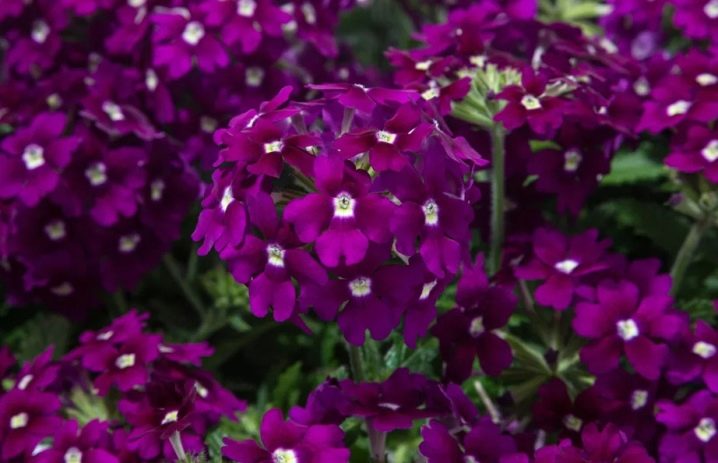
Bonar
This plant grows up to a meter in height. At the tops of the tall stems are beautiful purple inflorescences. The plant blooms until late autumn. It is unpretentious to care for, so it can be planted in your garden even for busy people.
For planting, it is better to choose such varieties of verbena as "Lilac Rain" or "Lilac". They attract the attention of bees.
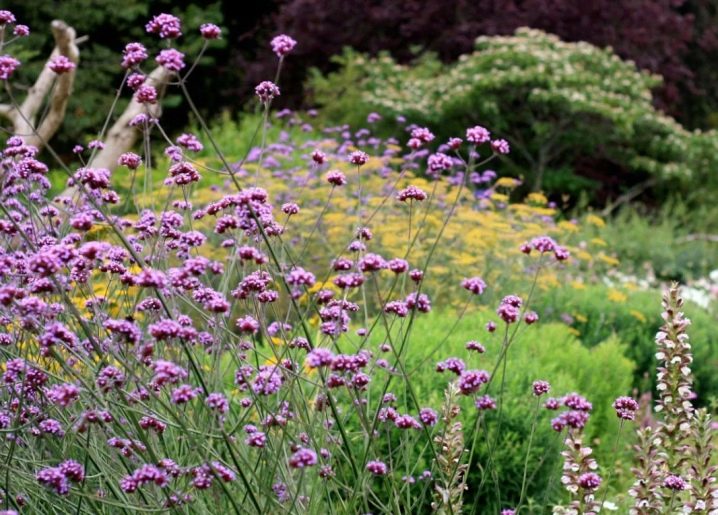
Lovely
A flower with such a beautiful name is distinguished by voluminous lush inflorescences. From the side, they resemble small balls. The color range of such plants is very large. You can find both white or lilac, and red or yellow flowers. Their petals are cut along the edges. Plants look very beautiful from the side.
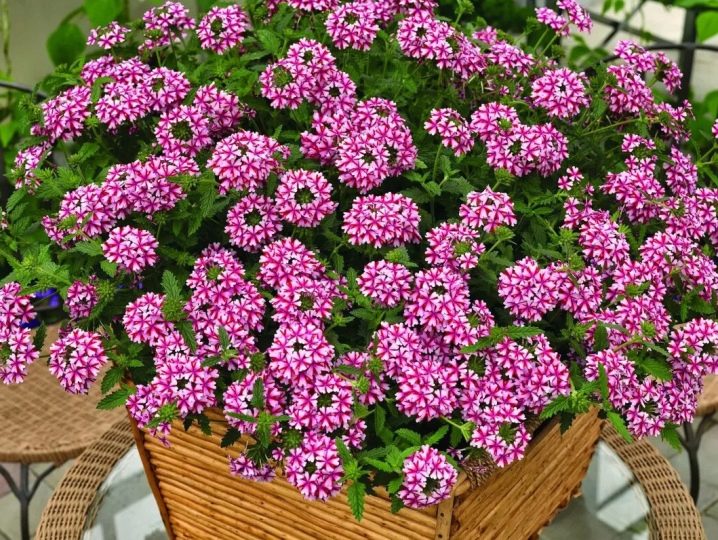
Medicinal
This type of verbena has been seen by many. The plant grows to about 50-60 centimeters. Its leaves are elongated and covered with teeth at the edges. The flowers of this verbena variety are small. They are collected in neat inflorescences. At the end of summer, brown nuts appear in their place.
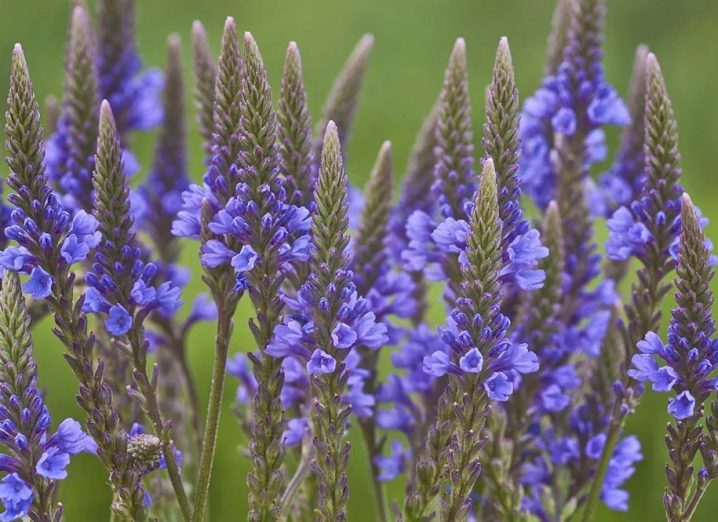
Landing
Before planting verbena on your site, you need to find a suitable place for it. In the process, it is important to consider the following points.
- Soil quality. Verbena is not recommended to be planted in wetlands. This will lead to rapid root decay. The soil on the site should be crumbly. In this case, water and nutrients will quickly flow to the plant roots. When planting plants, the bottom of the holes is usually covered with a layer of drainage. These can be pebbles or small brick chips. A layer of loose earth is usually poured over the drainage.
- Neighborhood. Vervain is usually planted next to plants that bloom in late spring. In this case, she will replace these flowers with herself, and the site will not look ugly. But this is an optional condition.
- Illumination. The verbena planting site should be sunny. In the shade, the flower develops a little worse.
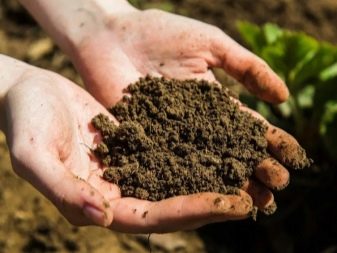
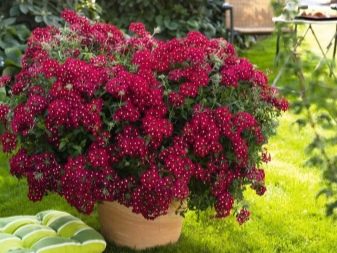
It is worth planting verbena in open ground with seeds only in regions with a warm climate. In cold areas, it is pre-grown in containers or cups.
The distance between future bushes should be within 20 centimeters. In this case, they will develop normally without interfering with each other. When planting larger bushes, the distance is increased to 35-40 centimeters.
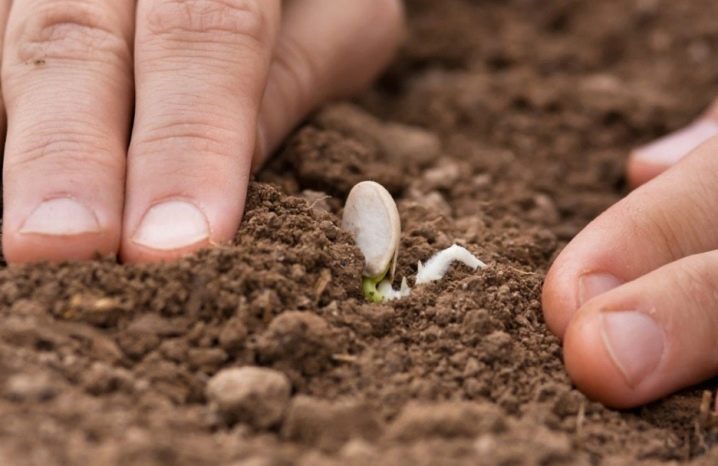
Separately, it is worth talking about planting verbena in containers or pots. This process consists of the following steps.
- Selection of containers. The container for planting verbena should not be too deep. It is very important that there are drainage holes at the bottom to drain water. Before planting plants, the pots must be decontaminated. To do this, they are treated with boiling water or a weak solution of potassium permanganate.
- Soil preparation. For planting verbena, you can use a store-bought flower mix. It is recommended to calcine it before sowing seeds. This will help disinfect the soil.
- Sowing seeds. Planting material is sown throughout the pot, sprinkled on top with a very thin layer of soil. Next, the soil is moistened with warm water from a spray bottle. Watering crops from a watering can is not worth it, otherwise you can wash the seeds out of the soil.
Vervain grown in pots is looked after in the same way as flowers growing in the open field. The container with plants should be located in a well-lit place. Typically, vervain is placed on a balcony or windowsill.
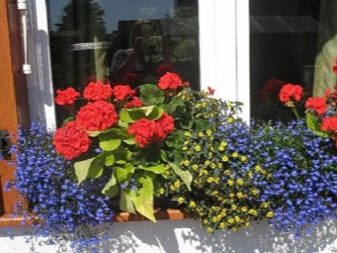
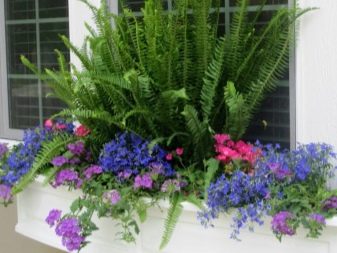
Care
Taking care of flowers is easy enough.
Watering and loosening the soil
Verbena tolerates heat and even drought well. But this only applies to adult plants. Young flowers need regular watering. It is important for gardeners to monitor the condition of the soil on the site. It shouldn't dry out.
From time to time, it is recommended to loosen the soil next to the plants. This procedure stimulates the active growth of flowers. Loosening is usually combined with watering. In addition, the soil can be loosened after rain.
In order not to waste time on watering and weed control, it is recommended to mulch the soil on the site. The mulch layer should be thin. It is important that it does not come into contact with plant stems. The mulch layer needs to be renewed from time to time.
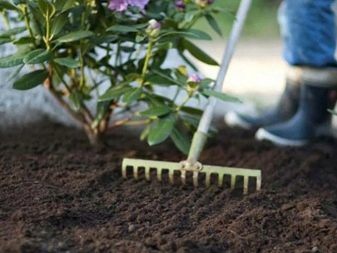
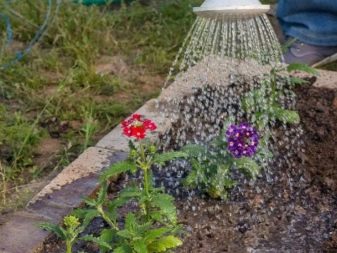
Top dressing
Any universal fertilizer is suitable for feeding flowers. You can buy food for flowering crops at any gardening store. You need to use the product following the instructions.
As a rule, plants are fed 3-4 times per season. This helps to grow spectacular flowering bushes.
If there is no time for regular feeding, the plants can be fed only once. This is best done immediately after the first flowers appear.
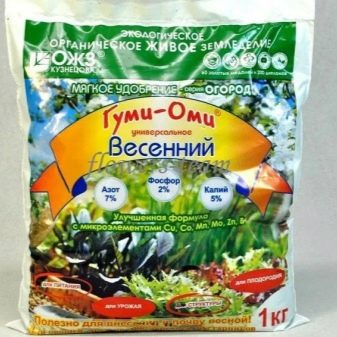

Pruning
This treatment helps to prolong the flowering of the verbena. The florist needs to regularly inspect the plant and remove the faded parts of the inflorescences. You need to cut them off with sharp scissors or garden pruners.
This procedure helps not only to keep the plants in good condition. It also prevents flowers from self-seeding.
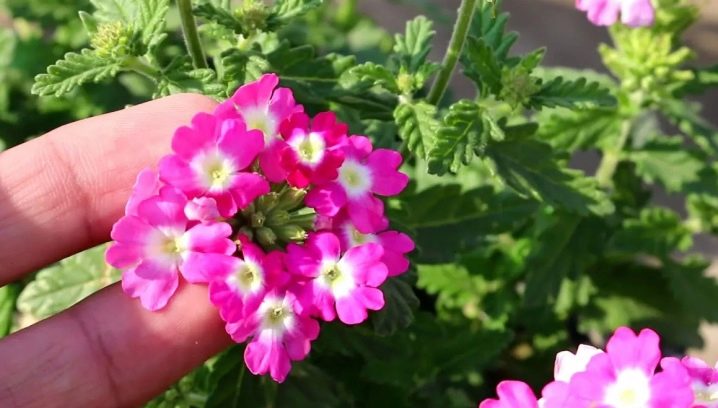
Shelter
Verbena is a perennial plant. Therefore, in many regions it has been grown for several years in a row. But if the winter is cold in a certain part of the country, the flowers must be covered. You can use a thick layer of sawdust, fallen leaves or straw for this. If the temperature in winter drops below -20 degrees, it is recommended to dig up the verbena bush and transplant it into a pot.
It is best to store the plant in a basement or pantry. The room temperature should not rise above 0 degrees.


Reproduction methods
There are two main methods of verbena breeding. Each of them has its own characteristics.
Seeds
Growing verbena from seeds is difficult. The first step is to properly prepare the seeds for planting. This is done as follows.
- To begin with, the planting material is immersed in water for several hours. The liquid in which the seeds are located must be changed from time to time. The water should be soft and warm.
- Then the seeds are laid out on a napkin or piece of cloth.
- For 5-7 days, they are left in a room with a temperature close to zero. This allows the planting material to be hardened.
- Next, the seeds are treated with a growth stimulant. To do this, you can use drugs such as "Epin" or "Zircon". Usually, the seeds are soaked in the stimulant solution for half an hour. Instead of purchased preparations, you can also use an ash solution or aloe juice.
The prepared planting material must be sown without covering it with soil from above. Next, the crops must be covered with foil or a piece of glass. In about a week, the first shoots will appear on the site. During this time, the shelter can be removed.
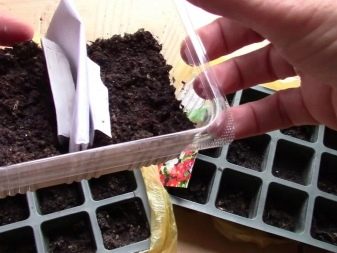
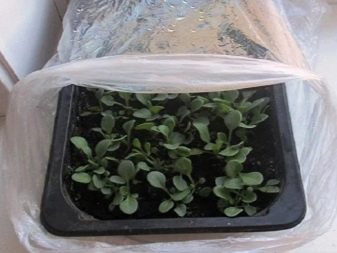
Cuttings
Only hybrid forms of plants can be propagated by this method. It is recommended to do this in the fall. At this time, annual shoots are cut into pieces. Each of them should have 3-6 buds.
Next, the cuttings are immersed in a container with light soil or wet sand. The pots with them are covered with glass. In this form, the plants are left to take root. In spring, flowers can be planted in a new location.

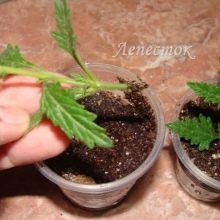
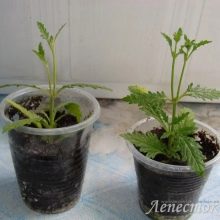
Diseases and pests
Like other flowers, verbena often attracts the attention of various pests. Most often, flowers are affected by insects such as aphids and spider mites. You can get rid of pests using both folk remedies and purchased drugs.
Most diseases do not pose a danger to perennial vervain. A plant can only suffer if it grows in an area with waterlogged soil. In this situation, the following diseases may be dangerous for him.
- Root and stem rot. If the plant is affected by this disease, the bush begins to wither quickly. Its stem turns black and tough. The higher the humidity level, the faster the flower dies.It is impossible to save a diseased plant. Therefore, it must be dug up and destroyed.
- Powdery mildew. This disease affects many plants. Verbena is no exception. Dense white spots appear on the foliage of diseased flowers. Over time, the leaves turn purple. Then they dry out quickly. If the plants are not treated, the bushes will die very soon. In the initial stages of the disease, the flower can be treated with Biteranol or other drugs with a similar effect. Severely ill plants are recommended to be dug up and destroyed.
These diseases pose a danger to both indoor verbena and flowers grown in a flower bed.

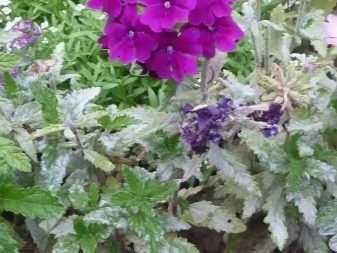
Use in landscape design
Perennial verbena grows well both outdoors and in flowerpots, boxes or pots. Therefore, there are many ways to use these colors in landscaping.
Tall varieties of verbena can be planted individually or with other flowers. When creating mixborders, these flowers are usually placed in the background or middle ground. Different varieties of verbena go well with each other.
Planters or volumetric flower pots look beautiful next to front doors or gazebos.
Growing verbena at home is within the power of even a novice florist. Therefore, it can be safely planted in pots, pots or open ground.
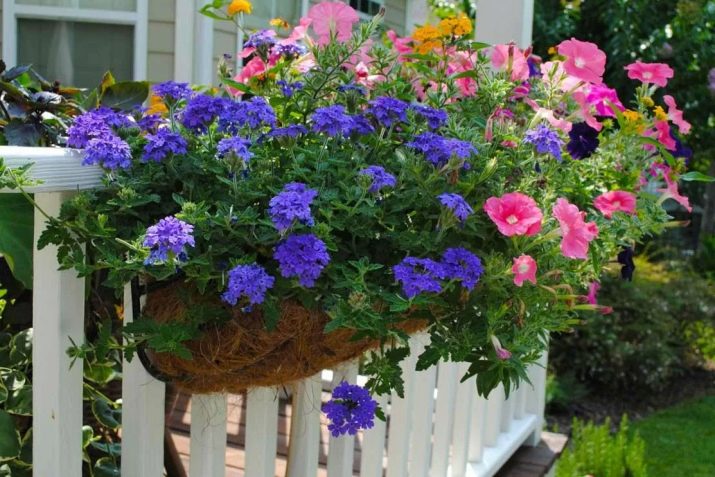
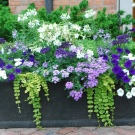
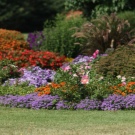
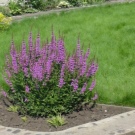

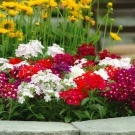







































































































The comment was sent successfully.